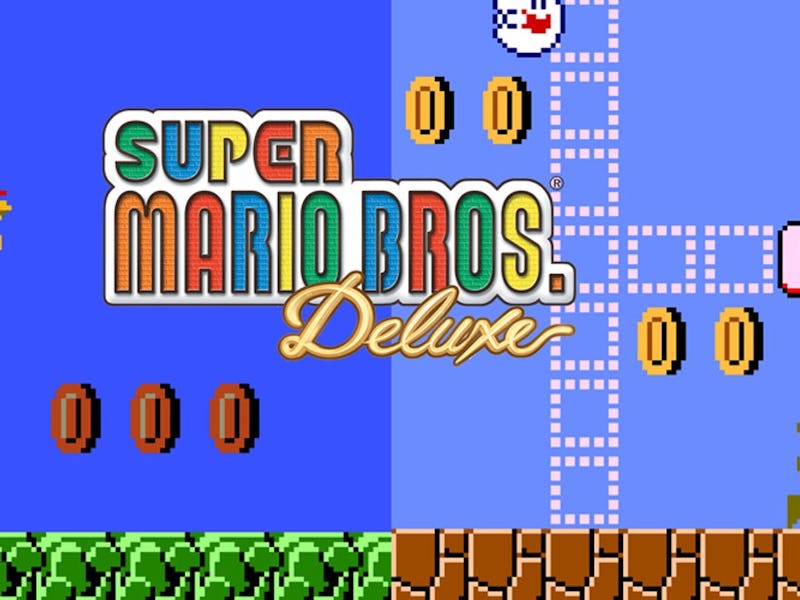An Old Game Boy Color Game Set the Bar For Remaking a Classic
Mario and fortune telling, together at last.

Updating an old video game for a modern console sounds simple, but every few months an attempt to do just that ends in high-profile catastrophe. Grand Theft Auto: Definitive Edition was rife with visual and technical issues. Warcraft III: Reforged made bizarre interface changes and cut features from the original title. The Silent Hill HD Collection was missing an entire Silent Hill game, and somehow that wasn’t its biggest problem.
Remaster disasters are disappointing in part because it’s often so difficult to play the originals today. Maybe you sold or broke your old PlayStation, or maybe you were forced to update to the version of the game you didn’t want (ahem, Reforged). But as dire as the gaming industry’s treatment of its own legacy can be, that’s nothing compared to the days before digital storefronts and sketchy ROM sites. Back then, classic video games just vanished into basements and flea markets.
That’s part of what makes Super Mario Bros. Deluxe, Nintendo’s 1999 Game Boy Color remaster of its historic 1985 platformer, a little landmark in the company’s history. As game libraries became obsolete, developers soon realized that porting or remaking them for modern consoles was an easy way to make money. Many of these updates were half-assed rip-offs, but Super Mario Bros. Deluxe was stuffed to the gills with new ideas.
But it’s still, you know, Mario.
Challenge mode encourages players to hunt for hidden objects and hit score targets to earn prizes. There are increasingly tricky speedrun goals to topple. Link cable owners can compete with friends or swap high scores. The infamous Lost Levels can be unlocked. A Toy Box section is crammed full of minigames and novelties ranging from a fortune teller to a calendar. An in-game photo album serves as a proto-achievement system. And yes, you can plug in a Game Boy Printer and run off banners, pictures, and other celebrations of your victories over Bowser.
There were also bug fixes, subtle physics tweaks and graphical updates, quality of life improvements, and the pre-smartphone novelty of taking a console classic on the go. But it is the sheer amount of stuff crammed into the cart that made Deluxe feel like an instant classic. Super Mario Bros. was already 14 years old in 1999, and many players knew it inside and out. Deluxe made the old standby feel fresh again, because you couldn’t so much as stomp a goomba without unlocking some sort of toy. Nintendo’s best adventures are defined by their whimsical sense of exploration, and Deluxe refreshed that feeling in one of its more straightforward titles.
Super Mario Bros. is a far, far simpler game than Grand Theft Auto III, Warcraft III, or any other title to headline a recent remaster debacle, but its design philosophy remains relevant. Add new ways to play, but don’t mess with what already works. Squash bugs and touch up the visuals, but don’t completely rework the game’s feel or graphical style. And do not, for the love of God, start removing features. Deluxe had a minuscule team compared to modern development armies, but “Don’t fix what isn’t broken” is a lesson that can be scaled indefinitely, even if publishers steadfastly refuse to learn it.
Once sold on the Nintendo eShop, Deluxe is currently out of commission.
It's a sign of the times that “Wow, multiplayer!” summed up a lot of contemporary reviews, but Deluxe was praised upon release and has since been judged one of the Game Boy Color’s all-time classics. It presaged the convenience of loading our phones and portable consoles with older titles, but unfortunately didn’t usher in an era where those ports were treated with love and respect; just look at how Square Enix butchered its mobile Final Fantasy titles for a sad comparison.
Today, Super Mario Bros. Deluxe is largely forgotten, but it set a bar for remakes that few companies bother to meet (including, sometimes, Nintendo, like when it released the wonderful Super Mario 3D All-Stars compilation, then made the baffling decision to only sell it for six months). Ironically, it’s now something of a lost classic itself; it’s easy to play Super Mario Bros. today, but Deluxe isn’t available on the Switch’s storefront. If you can find a copy, however, it remains a sterling example of how to modernize a cherished classic.